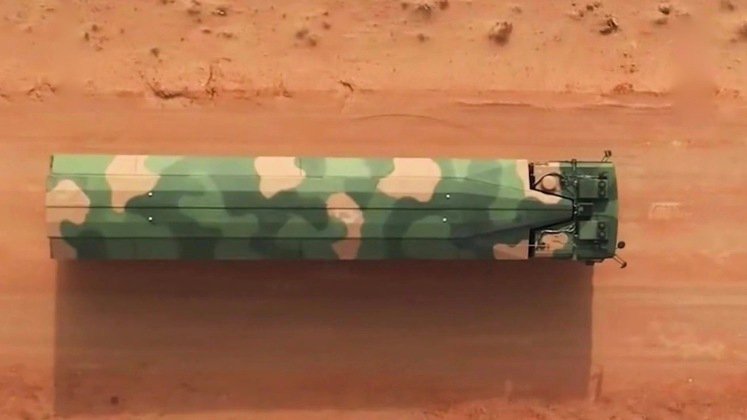<p >The Guangdong Aerodynamic Research Academy based in southern China has unveiled the design of a new hypersonic glide vehicle, the GDF-600, which has a number of new features never before seen on systems of its kind. China is currently leading the world in the development of hypersonic glide vehicles, and although <a href=" target="_blank">Russia</a> and <a href=" target="_blank">North Korea also field</a> such systems, the Chinese tech sector’s much higher standing in areas such as material science has allowed it to develop novel applications of the new technology. While hypersonic glide vehicles are conventionally known for their ability to delivery payloads, usually nuclear, to their targets at very high speeds and with high manoeuvrability, which makes them <a href=" target="_blank">nearly impossible to intercept</a>, the GDF-600 is a much more versatile design. The vehicle is designed with payload options that include electronic warfare and reconnaissance suites, as well as bombs and both supersonic and subsonic drones that detach from the vehicle during flight.&nbsp;</p><p ><img src=" title="GDF-600 on Display with Submunitions at Zhuhai 2024"></p><p >The GDF-600 has a launch mass of 5000 kilograms, a payload of 1200 kilograms, and a range of up to 600 kilometres, making it one of the smallest and shortest ranged hypersonic glide vehicles in the world. This is reflected in its speed of Mach 7, in contrast to older designs such as the <a href=" target="_blank">Russian Avangard </a>which fly at intercontinental ranges and at speeds of well over Mach 20. The GDF-600 is expected to be considerably less costly than larger longer ranged designs, which combined with its versatility could lead it to be favoured for very widespread deployments in the Pacific theatre. Although its range appears short, the vehicle requires a rocket booster to reach optimal altitude, which will likely more than double its reach. Furthermore, the launch of drones as submunition payloads would fly further than the vehicle itself to reach targets greater distances away. The vehicle’s ability to release sub-payloads, potentially at several points along its trajectory, allows a single vehicle to engage multiple targets, whether with bombs, drone strikes or electronic attacks.&nbsp;</p><p ><img src=" title="Hypersonic Glide Vehicle in Flight – artwork"></p><p >The Guangdong Aerodynamic Research Academy&nbsp;has notably claim that the GDF-600’s concept for a hypersonic glide vehicle with versatile submunitions could be scaled up for a 6000 kilometre range, which when combined with a boost vehicle would have an intercontinental reach. The capabilities of Chinese intercontinental range hypersonic glide vehicles have caused very considerable concern in the Western world, which have been exacerbated by the results of flight testing. Vice Chairman of the U.S. Joint Chiefs of Staff General John Hyten, for one, in November 2021 <a href=" >observed</a> of a <a href=" target="_blank">test earlier that year</a>: “They launched a long-range missile. It went around the world, dropped off a hypersonic glide vehicle that glided all the way back to China, that impacted a target in China.” He stressed that the vehicle struck accurately, in spite of its extreme range and speed, and called the pace at which China's military is developing capabilities "stunning.” Hyten warned that China it could gain the capability to launch a surprise nuclear attack on the U.S. despite the small size of its nuclear arsenal, with hypersonic glide vehicles serving as major force multipliers in this regard.</p>
New Details on China’s Powerful Hypersonic Glide Vehicle with Drone and Bomb Submunitions

